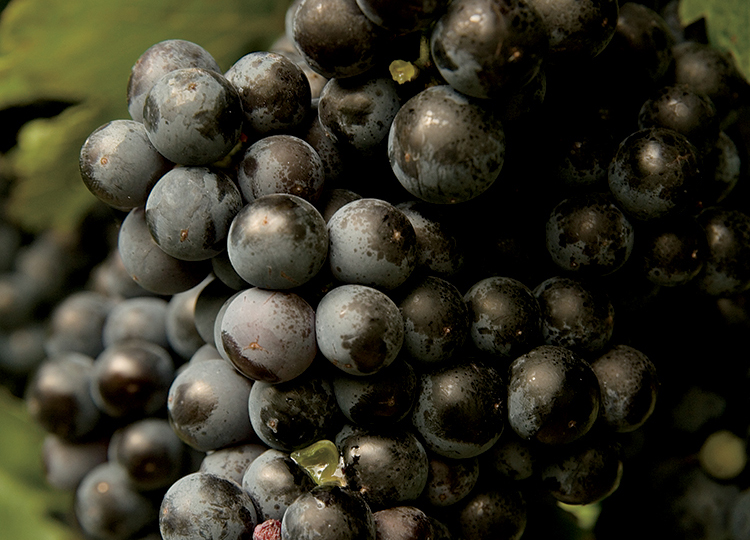Home > Texas > Texas Agritourism > Texas Wineries Play a Key Role in the State’s Agriculture Industry
Texas Wineries Play a Key Role in the State’s Agriculture Industry
In partnership with: Texas Department of Agriculture

Ed and Susan Auler have been called “the first family of Texas wines,” thanks to their creative and successful efforts to build up the state’s industry for more than 30 years. With a title like that, it’s no secret that they are wine — and wine industry — experts.
“Ed and I, along with a couple other wineries in the mid 1970s, gave rebirth to the Texas wine industry,” Susan Auler says. “We have worked hard to create a viable Texas wine industry by producing good, noteworthy wines and working with the Texas Department of Agriculture in their marketing efforts.”
Founders of Fall Creek Vineyards in Tow, the Aulers began their journey with a trip to France in 1973. After enjoying the French wine scene, and realizing that the soil and terrain of Ed’s family cattle ranch was very similar to that of the French wine country, they began experimenting with grape growing. From there, Fall Creek Vineyards was established.
Fall Creek offers a number of award-winning wines, including Chardonnay, Savignon Blac, Merlot and more, and even helped establish the Hill Country American Viticultural Area (AVA) 35 years ago.
“We continued traveling back to France, California and other major wine regions in the world as part of our research and education for growing the best wines in Texas,” Auler says. “We learned early on the importance of establishing an AVA for the Texas Hill Country that would create respect and credibility for our regional wines.”
Big Economic Impact
Fall Creek Vineyards is truly a destination, and the same can be said for many of the more than 300 licensed wineries in Texas. Along with the grape growers across the state, wineries combine to contribute more than $1.83 billion in economic value to Texas, according to statistics from the Texas Wine & Grape Growers Association. Wine-related tourism accounts for $437.8 million, with more than 1.4 million tourists each year.
Texas is home to eight federally approved viticultural areas: Bell Mountain, Fredericksburg, Texas Hill Country, Escondido Valley, Texas High Plains, Davis Mountain, Mesilla Valley and Texoma.
The Hill Country region is the hotbed, second only to California’s Napa Valley as the fastest-growing wine destination in the country. Wine Enthusiast magazine listed Texas Hill Country in its 10 best wine-travel destinations for 2014.
“The Hill Country has the largest population of wineries and tasting rooms, so people are coming here,” says January Wiese, executive director of the Texas Hill Country Wineries. “It’s the perfect fit for tourists.”
Great Tours, Great Wines
Winery owners and their employees know all about the dual roles they play as producers of wines and managers of tourism. Even in the setting of a beautiful vineyard and well-appointed tasting room, the quality of the wine is what counts most, and wineries across the Lone Star State are meeting that challenge. Llano Estacado in Lubbock, which opened in 1976, is the state’s largest and best-selling premium winery.
“In general, our winery has become a model for the modern Texas winery,” says Greg Bruni, vice president and executive winemaker at Llano Estacado. “The quality of the wine has always been high here.
“I think part of what has made the difference has been high-quality grapes, but also the people who have been here through the years.”
Another premier wine producer is Messina Hof in Bryan, which was founded in 1977 and includes locations in Bryan and Fredericksburg. The owners, Paul and Merrill Bonarrigo, merged the historical winemaking traditions of Messina, Sicily, and Hof, Germany, to create an award-winning winery.
Other Texas wineries of note include Becker Vineyards in Stonewall, Haak Vineyards & Winery in Santa Fe and Certenberg Vineyards in Voca.
It’s fitting that Texas is a leader in the wine industry. The first vineyard established in North America was in Texas in 1662.
Today, Texas has more than 7,000 acres of producing vineyard farmland that yields grapes for more than 3 million gallons of wine annually, according to the Texas Wine and Grape Growers Association.
![Texas Wineries [INFOGRAPHIC]](https://eadn-wc01-4177395.nxedge.io/wp-content/uploads/2020/05/Screen-Shot-2014-09-02-at-9.39.11-AM.png)




![Texas Wineries [INFOGRAPHIC]](https://eadn-wc01-4177395.nxedge.io/wp-content/uploads/2020/05/Screen-Shot-2014-09-02-at-9.38.54-AM.png)
